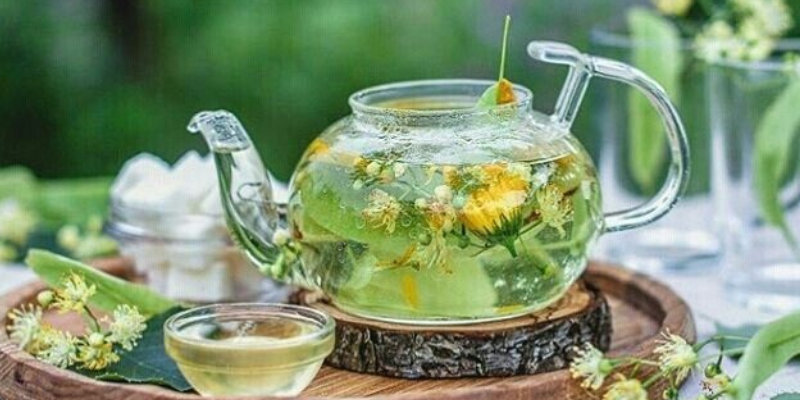Tea has long been one of the most beloved beverages around the world, with a history stretching back thousands of years. With numerous regions producing different types of tea, it’s no wonder that tea varieties are as diverse as the cultures that drink them. Whether you’re a casual tea drinker or an avid connoisseur, exploring the world of tea varieties can be an exciting and enriching experience.
In this article, we’ll delve into the different types of tea, how they’re made, and what makes each variety unique. From the delicate and fragrant white tea to the rich and full-bodied black tea, there’s a tea variety for every palate.
What Are Tea Varieties?
Tea varieties refer to the different types of tea that come from the same plant, Camellia sinensis. While all tea comes from this plant, the differences arise in the processing methods, regions where it’s grown, and even the time of harvest. The four primary categories of tea are:
- White Tea
- Green Tea
- Oolong Tea
- Black Tea
Each of these categories includes a range of different sub-varieties, all with their own distinct flavors, aromas, and brewing techniques. Let’s take a closer look at each of these tea varieties and what makes them special.
White Tea: The Delicate Variety
White tea is considered the most delicate of all tea varieties. It is made from the young leaves and buds of the tea plant, which are simply plucked and allowed to dry naturally. White tea is minimally processed, which is why it retains a more subtle, refined flavor compared to other tea varieties.
Key Types of White Tea
- Silver Needle: Known for its pale color and sweet, floral flavor, Silver Needle is one of the most prized white tea varieties. It’s made from the young buds of the tea plant and is delicate in both flavor and aroma.
- White Peony: This tea is made from both the buds and the younger leaves. It’s a bit bolder than Silver Needle, with a fruity and slightly sweet flavor.
White tea is the perfect choice for those who prefer a light and smooth cup of tea. It is often enjoyed without milk or sweeteners, allowing its natural flavor to shine.
Green Tea: The Refreshing Choice
Green tea is one of the most popular and well-known tea varieties globally. Unlike black tea, green tea leaves are not oxidized, which preserves their green color and fresh, grassy flavor. Green tea is known for its health benefits, such as its rich antioxidant content, which has made it a favorite among health-conscious tea drinkers.
Key Types of Green Tea
- Sencha: The most common green tea in Japan, Sencha has a bright green color and a slightly grassy, vegetal flavor. It’s a refreshing tea that can be enjoyed at any time of the day.
- Matcha: This finely powdered green tea is used in Japanese tea ceremonies and is known for its vibrant green color and strong, umami flavor. Matcha is often whisked with water and consumed as a full-bodied, concentrated tea.
- Dragon Well (Longjing): Originating from China, this green tea variety is known for its nutty, sweet flavor with a hint of roasted chestnut. It is considered one of the highest-quality Chinese green teas.
Green tea varieties can vary greatly in taste, from mild and floral to grassy and vegetal. Regardless of the variety, all green teas are packed with antioxidants and other beneficial compounds.
Oolong Tea: The Best of Both Worlds
Oolong tea is a unique tea variety that falls somewhere between green tea and black tea. It undergoes partial oxidation, giving it a flavor profile that is both floral and slightly fruity, yet with a depth similar to black tea. Oolong tea is popular in both China and Taiwan and is often enjoyed as a refreshing afternoon tea.
Key Types of Oolong Tea
- Tie Guan Yin (Iron Goddess of Mercy): One of the most famous oolong teas, Tie Guan Yin is known for its floral, fruity flavor with hints of cream and orchid. It’s a versatile tea that can be brewed multiple times, with each infusion revealing new layers of flavor.
- Da Hong Pao: This is a rich, dark oolong with a complex flavor profile that includes roasted, fruity, and slightly mineral notes. Da Hong Pao is highly prized and is often referred to as the “king of oolong.”
Oolong tea varieties can range from light and floral to dark and robust, making them a great option for those who enjoy a more nuanced flavor experience.
Black Tea: The Bold and Robust Tea
Black tea is the most oxidized and fully processed of all the tea varieties. As a result, it has a strong, bold flavor that is often described as malty, astringent, or even smoky. Black tea is typically consumed with milk and sugar in many Western cultures, although it can also be enjoyed plain.
Key Types of Black Tea
- Assam: Grown in India, Assam tea is known for its strong, malty flavor and bold body. It’s often used in breakfast blends like English Breakfast and Irish Breakfast tea.
- Darjeeling: Sometimes called the “champagne of teas,” Darjeeling tea is grown in the high-altitude regions of India. It has a unique muscatel flavor, often with hints of floral and fruity notes.
- Ceylon: This black tea comes from Sri Lanka and is known for its bright, brisk flavor. It’s often used in iced tea blends and has a citrusy, lively taste.
Black tea varieties tend to be more robust than other types of tea, making them perfect for those who enjoy a bold, energizing drink.
Lesser-Known Tea Varieties
While the four primary categories of tea are the most well-known, there are also many lesser-known tea varieties that deserve attention. These teas are often unique to specific regions and cultures, each with its own rich history.
Herbal Teas: Infusions Beyond Camellia sinensis
Although not technically a true tea, herbal teas are infusions made from a variety of herbs, flowers, and fruits. Popular herbal teas include chamomile, peppermint, and hibiscus, each offering distinct flavors and health benefits.
Pu-erh Tea: The Aged Tea
Pu-erh tea is a fermented tea variety that is often aged for years to develop a rich, earthy flavor. This tea is typically produced in China’s Yunnan province and is available in both raw and cooked forms. Pu-erh tea is known for its health benefits, including its ability to support digestion and detoxify the body.
How to Choose the Right Tea Variety
With so many different tea varieties available, it can be difficult to choose the right one for you. Here are a few tips to help you pick the perfect tea based on your preferences:
- If you prefer light, subtle flavors, opt for white tea or green tea.
- If you enjoy bold, robust flavors, black tea might be your best choice.
- For those who enjoy a more complex flavor profile, oolong tea offers a great balance between green and black tea.
- If you’re interested in something unique and full of character, explore pu-erh tea or herbal infusions.
Conclusion
Tea varieties are as diverse as the cultures that enjoy them, and there’s a world of flavors and aromas waiting to be discovered. From the delicate, floral notes of white tea to the bold, malty richness of black tea, there’s a tea variety for every taste. By understanding the different types of tea and their characteristics, you can elevate your tea experience and find the perfect brew to suit your preferences.
So whether you’re new to tea or a seasoned enthusiast, the world of tea varieties offers endless opportunities for exploration and enjoyment. Experiment with different types, brew methods, and flavors to truly immerse yourself in the tea experience.


